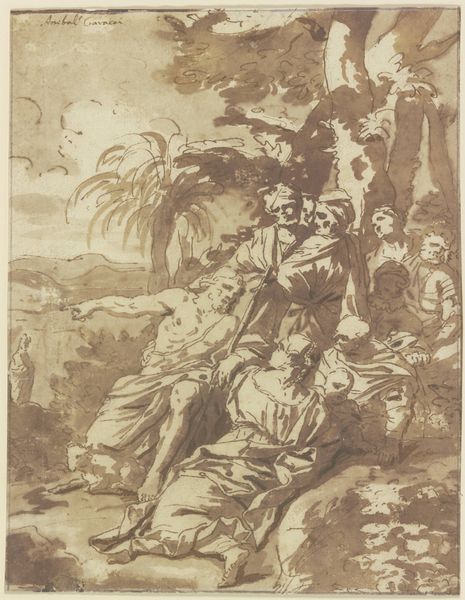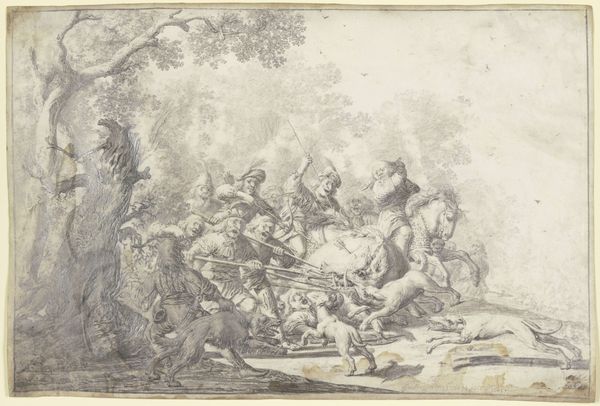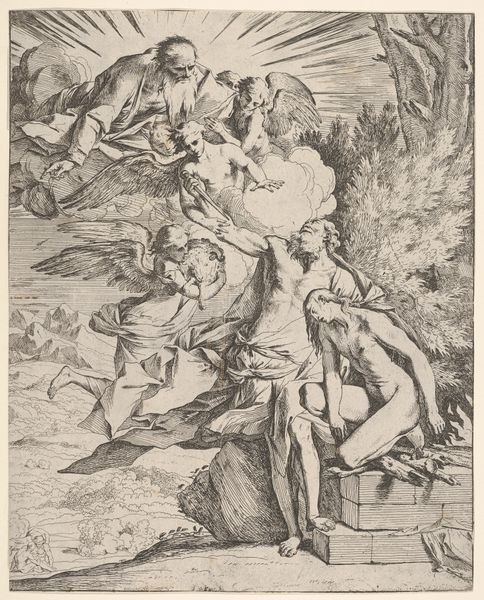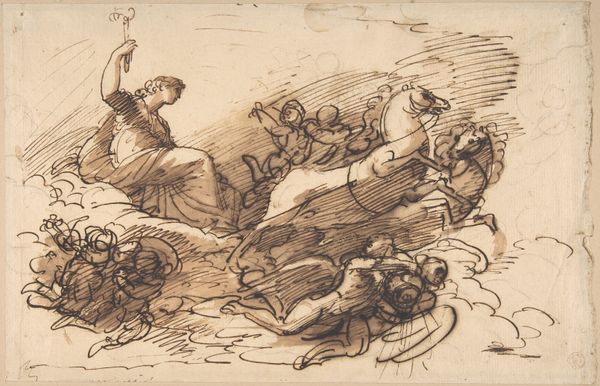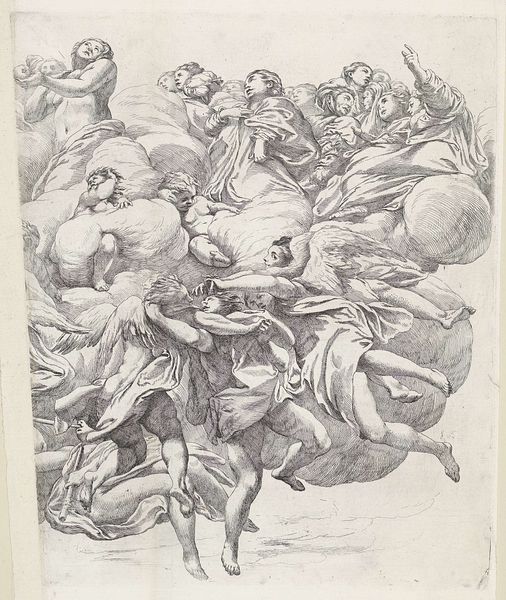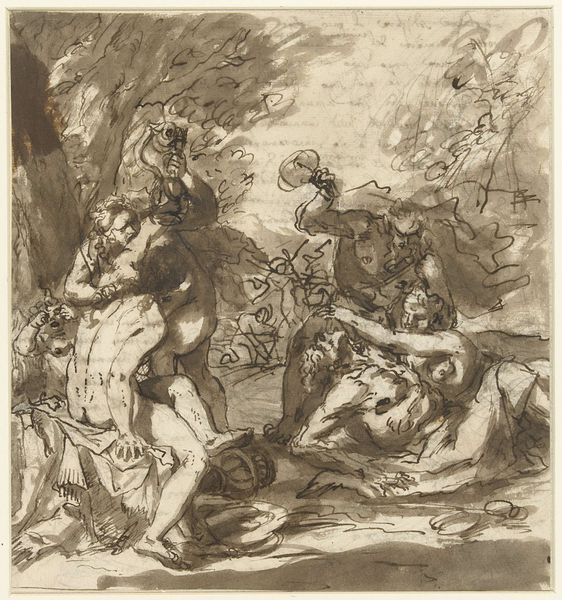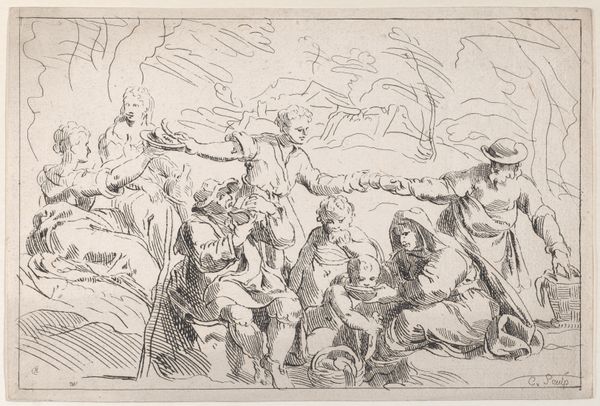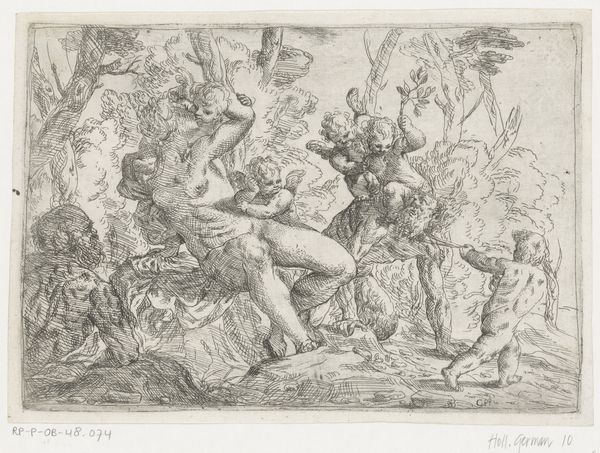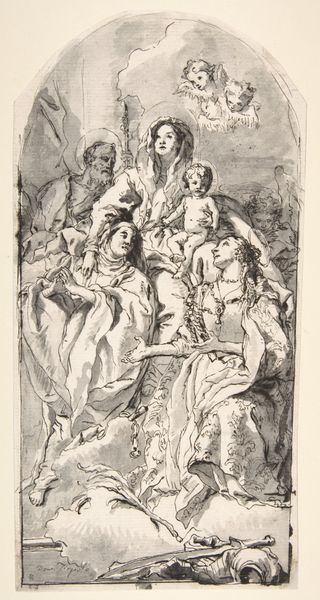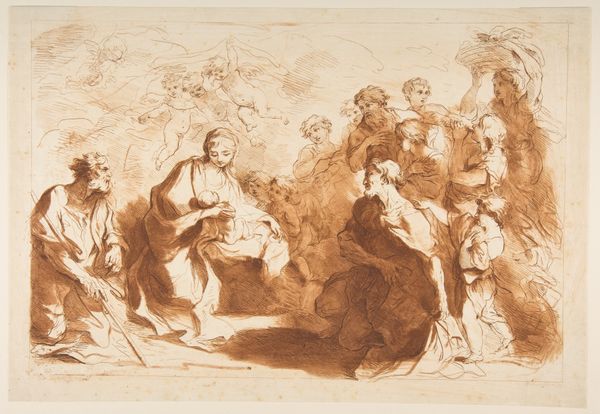
drawing, print, engraving
#
drawing
#
ink drawing
#
baroque
#
animal
# print
#
pen sketch
#
landscape
#
figuration
#
mythology
#
engraving
Dimensions: Sheet (Trimmed): 8 15/16 × 12 3/8 in. (22.7 × 31.4 cm)
Copyright: Public Domain
Simone Cantarini created this print, Rape of Europa, in Italy sometime in the mid-17th century. It shows the mythological story of Europa, a Phoenician princess, being abducted by Zeus, who has transformed himself into a bull. This image draws on established visual codes, using classical mythology to explore themes of power, desire, and transformation. Italy at this time was under strong religious and aristocratic control, and Cantarini’s work reflects a culture steeped in classical learning and Christian morality. But by depicting a scene of divine transgression, he also hints at tensions within that society. The institutional histories of art academies and patronage systems influenced artists like Cantarini, shaping their subject matter and style. Was this image an exploration of the existing social norms or a self-consciously conservative statement? Understanding this artwork requires research into the social and cultural history of 17th-century Italy, examining religious beliefs, political structures, and artistic traditions of the period. By exploring these contexts, we can better appreciate the complex meanings embedded in Cantarini’s image.
Comments
No comments
Be the first to comment and join the conversation on the ultimate creative platform.
